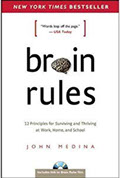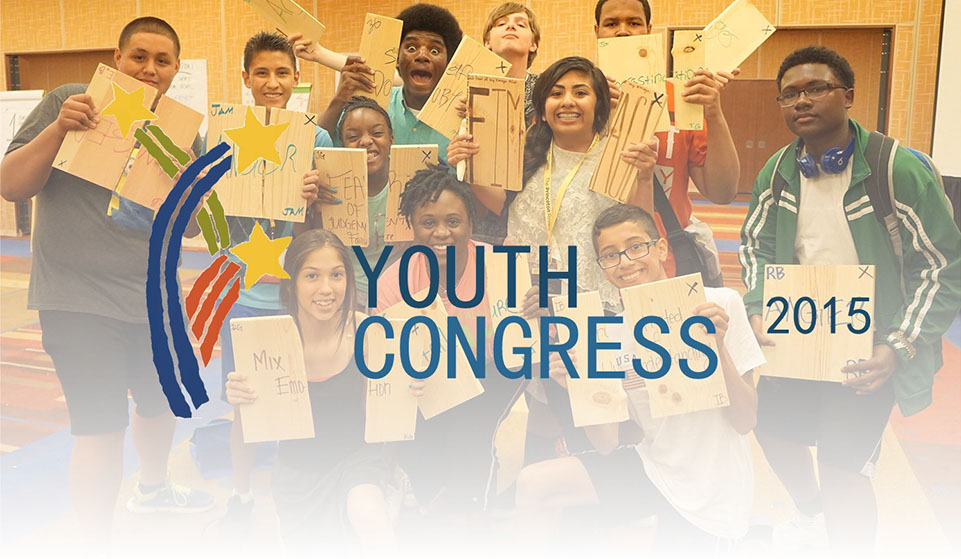
The Training
The Youth Congress training is designed and delivered by the Seeds Training team. Seeds provides leadership, learning to learn and life skills training for students across the country.
This years program included multiple training modules. All of the training content is delivered using brain-friendly and experiential methodologies designed to make learning fun, interactive and longer-lasting.
Here are some quick summaries of key learning components in the Youth Congress:
FIMAGE
Integrity
Keys to Motivation
Storytelling
Brain 101
Fear of Image : FIMAGE
"As soon as you worry about looking stupid, that's when you get stupid."
When we are babies, we learn constantly and we do it without caring about how we look. Babies almost never look cool. In fact, they look ridiculously un-cool most of the time. But we all love babies. We find them entirely entertaining. We are fascinated with their ability to explore everything. They are fascinated, baffled and excited about things that we all take for granted. They can spend an hour just playing with a rock.
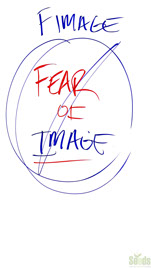 Remember when learning was fun? When you did things without worrying about looking cool in the process?
Remember when learning was fun? When you did things without worrying about looking cool in the process?
Well, unfortunately for most of us, those days are over. Most of us now have this little critic that lives in our own head. This critic pops up anytime we are challenged, anytime we are in a new situation, anytime we are around new people...all these situations cause us to consider the possibility of not looking cool. These challenging situations make us worried about making mistakes, failing, looking silly and all of these fears are amplified if those things happen in front of other people! Nobody likes to make a fool out of themselves in front of others. We will do almost anything to avoid that.
Unfortunately, this fear of looking stupid and making mistakes actually stops us from participating in activities that could lead to learning. This fear, called the fear of image, is the enemy of learning. This fear is natural and must be overcome to ensure that learning continues as we age. So, we have nicknamed this fear. We call it FIMAGE and it must be conquered!
Here are a few ways to blast through your FIMAGE and experience learning the way that babies do:
Everyday it is important to challenge your FIMAGE. Do things that push you out of your comfort zone. The more you challenge yourself, the more your FIMAGE begins to evaporate.
Keep participating in your learning. Be involved in the classroom.
Be willing to look silly while learning. Making mistakes is a necessary part of the learning process.
Support others when they take a risk. Be extra supportive when others make a mistake.
Do these things and you will be learning constantly, having fun and role modeling what it takes to be successful.
Integrity
The foundation of great leadership.
The word integrity is used often in discussion of world and local leaders. People talk about whether a particular person has it or if it has been compromised. The challenge is defining what integrity is and how it affects peoples relationships and ability to lead.
Looking at two triangles that are identical in size and shape the participants identified them as congruent. When placed on top of one another, they are a perfect match. When participants think of one of those triangles as their values and the other as their behaviors they are better able to think about their own integrity. Participants began to consider matching their values and behaviors.
For example, if someone had a stated value of being on time, they would match that with a behavior of being prompt or even early for their appointments. If the stated value was a great relationship with family members, they could match that with spending more time at home or increasing their interaction with their kids.
Once participants understood the concept and how it applied to themselves, they had an opportunity to put it to action. Participants stood in the room and listened to a variety of statements that required a value judgment. Quietly participants moved around the room to demonstrate their belief through action. At times one or two participants would stand alone while the rest of the group was in another part of the room.
At the end of the activity the group discussed what was challenging about the activity. Participants commented that their values had changed as they grew older. It was difficult the make a quick decision in some cases. Some participants talked about the little voice in their heads as they wondered what their peers would think of them for holding a certain belief. It was agreed that it is not always easy to be congruent with behaviors and values, but that integrity was and essential element for personal character and leadership ability.
The Keys to Motivation
Lessons from the SuperMaze.
Leaders must learn how to master the element of motivation. All change requires energy and both individuals and groups struggle to maintain that energy over time. We used a simulation activity called the SuperMaze to demonstrate some of the finer points about maintaining motivation.
The goal of the activity was go from one side of a maze to the other. There were a series of obstacles that made this very challenging. Students had to draw on the resources of their team, develop a communication strategy, support one another and move through adversity.
As groups progressed through the activity, the level of difficulty rose and the teams were challenged to keep their focus.
In the end all of the groups were successful. The success was magnified as they continued to learn from each other in the group discussion that followed. The 6 Key Motivators were introduced during the dialogue:
Clear Short-term Goals
Break larger tasks into small pieces. Each time you complete a piece, the confidence builds and the momentum increases.
Celebrating All Wins
Every little thing that helps you to succeed should be celebrated. Make a habit of getting excited about even the smallest successes. Every win is a step toward the larger goal.
Enrolling Others
Success is a team sport. Don't try to do it all by yourself. Surround yourself with talented people and get them involved.
Support
Give specific support and maintain that support even if mistakes are made.
Calling Time-Outs
Even when things are going very well, take time to pause and reflect about what is working and what needs to be improved. This will keep everyone enrolled and on the same page.
Acknowledging Others
Make a habit of pointing out the positive things that people are doing. Let them know that you appreciate their supportive behaviors. People will be drawn to this positive energy.
MISTAKES = Learning Opportunities
Learning cannot happen without mistakes. Stop wasting time and make choices. No matter what happens, use the results as information or feedback.
Great leaders understand the importance of these motivators. Practice these behaviors and you will become an irresistible leadership force.
Storytelling 101
Stories are a fantastic teaching tool and HOOK.
There is an art to telling great stories. If you can master the art, then teaching and hooking attention can be much easier. We took the time to practice this art and used our framework as a guide:
S - Situation
What is the situation? Who is involved?
Example: 6 astronauts on a risky mission to a far-reaching planet. They must bring back a newly discovered element that can help to save human life on earth.
C - Challenge or Complication
What diifficulty is being faced? What challenge may stop us?
Example: The journey's distance was mis-calculated and they may run out of fuel before returning home, losing the astronauts and the valuable element to save human life on earth.
Q- Question
How will the problem be solved?
Example: How will the astronauts make it? Will they have to sacrifice their lives? Will the world be saved?
A - Answer
What happens to solve the problem? What is the resolution? What have we learned? Gained?
Example: The astronauts attempted a dangerous rendezvous with an asteroid that had an old fuel station on it. They refueled and successfully returned home. Humanity was saved. Yay.
Brain 101
Brain 101
Build your brain muscle!
The brain is an incredibly powerful, super computer whose total capability is just starting to be understood. Modern technology and advanced research methods are illuminating the beauty and complexity of our brains everyday.
One of the fundamental challenges we face in education is learning how to learn. We all have these incredible brains but how do we use them? How do they work? Does our brain grow or develop like the other parts of our body? Are we in control of how it develops?
These are all great questions. Lets take a look at some things that we currently know about our amazing brains.
We all have one.
Its the same size and shape as everybody else's brain.
It has the same parts as other brains...even Einstein's.
However, the "genius" brain has more connections or "wires" that enable it to move information faster and to engage more of your brain's capacity. (The Neural Pathway)
These wires can be developed just like a muscle. We could all be geniuses.
So, if those things are true...how do we build the brain muscle? How do we develop those wires?
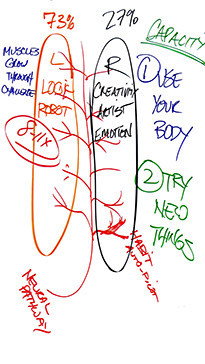 Here are the two simplest ways to do it:
Here are the two simplest ways to do it:
1. Use your body.
The body generates the electricity your brain needs to power its massive amount of activity. Think of your body as the power plant for your brain. When you use and engage your body you create the energy required to build those new "wires". More wires = more brain capacity.
2. Try new things.
Babies are the ultimate learning machine. Everyday they explore an exciting new world. They investigate everything with all of their senses. Every time that we try something new we fire up a new connection. When we practice that new behavior the connections get stronger and deeper...eventually becoming a habit...or something that we can do comfortably. Try new things everyday to keep your brain developing. Talk to new people. Go to new places. Try a new sport. Try a new musical instrument. Challenge your brain with new experiences and reap the rewards.
Here are two books that we recommend to further your understanding of how the brain works and develops:
Spark by Dr. John Ratey
SPARK is a groundbreaking exploration of 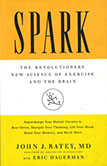 the connection between exercise and the brain’s performance that shows how even moderate exercise will supercharge mental circuits to beat stress, sharpen thinking, enhance memory, and much more.
the connection between exercise and the brain’s performance that shows how even moderate exercise will supercharge mental circuits to beat stress, sharpen thinking, enhance memory, and much more.
SPARK will change forever the way you think about your morning run---or, for that matter, simply the way you think.
Multitasking is the great buzz word in business today, but as developmental molecular biologist Medina tells readers in a chapter on attention, the brain can really only focus on one thing at a time. This alone is the best argument for not talking on your cellphone while driving. Medina (The Genetic Inferno) presents readers with a basket containing an even dozen good principles on how the brain works and how we can use them to our benefit at home and work. The author says our visual sense trumps all other senses, so pump up those PowerPoint presentations with graphics. The author says that we don't sleep to give our brain a rest—studies show our neurons firing furiously away while the rest of the body is catching a few z's. While our brain indeed loses cells as we age, it compensates so that we continue to be able to learn well into our golden years.

